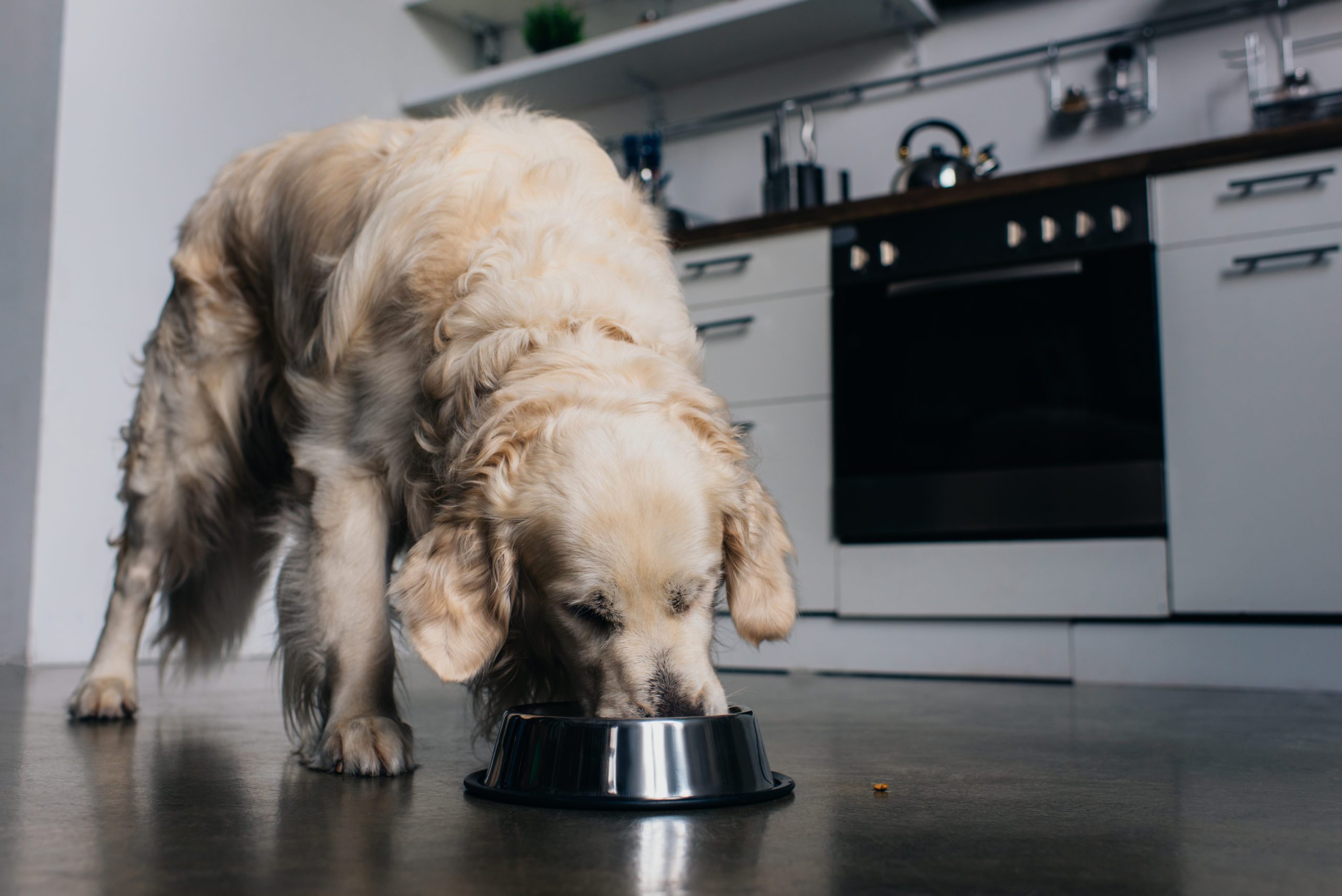
Tips & Tricks For When Dogs Eat Too Fast
When dogs eat too fast, it might seem comical, but it can pose serious risks to their health. In this guide, we’ll first share how to determine if your dog is eating too fast. We’ll then share easy tips on how to slow down a dog’s eating pace. Speedy eating not only leads to discomforts like vomiting and upset tummies but can also be dangerous, potentially causing a life-threatening condition known as bloat or gastric dilatation-volvulus (GDV).
How to Determine If Your Dog Is Eating Too Fast
It’s crucial to recognize the signs that your dog is eating too fast. Identifying these behaviors early can help you take action to prevent potential health issues. Here are some indicators that your furry friend might be gobbling down their meals too quickly:
- Vomiting After Eating: One of the most apparent signs is when your dog consistently vomits shortly after eating. If you notice regurgitated food often, it may indicate that they are eating too fast.
- Gulping and Swallowing Whole: Observe how your dog eats. If they’re swallowing large chunks of food without chewing or taking the time to savor their meal, it’s a strong indicator of rapid eating.
- Aggressive Food Consumption: Does your dog seem overly eager or anxious when it’s mealtime? If they approach their food dish aggressively, lunge towards the food, or display signs of impatience, they might be eating too fast.
- Bloating or Distended Stomach: Keep an eye on your dog’s abdomen during and after meals. If it becomes visibly swollen or distended, it could be a sign that they are ingesting air along with their food due to fast eating.
- Audible Noises: Listen for loud gulping or swallowing sounds while your dog eats. These noises can be an indicator of rapid food consumption.
- Choking or Coughing: If your dog frequently chokes or coughs during meals, it may be due to ingesting food too quickly, which can lead to throat irritation.
- Behavioral Changes: Rapid eating can sometimes result in behavioral changes. Your dog might become anxious or restless, especially if they are anticipating their meals.
The Dangers of Speedy Eating
When dogs eat too fast, they often gulp down their food along with a lot of air, causing their stomachs to distend. In severe cases, this can lead to the twisting of the stomach or intestines, a painful and life-threatening condition that requires immediate veterinary intervention. While larger dogs weighing over 100 pounds are at increased risk, it can happen to dogs of any size, especially those with fast-eating habits. Signs of early-stage bloat/GDV include:
- Restlessness or pacing
- Retching or attempts to vomit without results
- Swollen or distended abdomen
- A firm and painful abdomen
- Whimpering or other signs of distress
- Excessive drooling
- Panting or rapid breathing
If you notice any of these signs in your dog, seek veterinary care immediately!
4 Tips to Slow Down Dog Eating
- Slow-Feeder Bowls: These specially designed bowls come in various configurations and materials, featuring barriers that make dogs work for their kibble, preventing them from eating too quickly. Reading customer reviews can help provide insight into which brands are most effective, or check with your veterinarian for a recommendation.
- Serve Meals on a Cookie Sheet or in a Muffin Pan: Spreading food across a cookie sheet helps to force your dog to take smaller bites, preventing gobbling. A muffin tin breaks the meal into smaller portions that are harder to access, helping to curb rapid eating.
- Food Puzzle Toys: Similar to slow-feeders, food puzzle toys are a fantastic way to engage your dog’s problem-solving skills and provide mental stimulation. These toys come in various configurations and are designed to hide treats in nooks and crannies. Rolling puzzle toys, in particular, can keep your dog engaged while they work to earn their kibble or treats.
- Hand-Feeding: Though it may seem time-consuming, hand-feeding is a simple method to help slow your dog’s eating. You can integrate this approach into training sessions, using small portions of their regular kibble as rewards for good behavior or when teaching them new tricks.”
By implementing these tricks, you can effectively help slow down your dog’s eating pace and help them overcome rapid eating habits. Remember, if your dog exhibits signs of bloat, seek immediate veterinary care. It’s always better to be safe than sorry when it comes to your furry friend’s health.

